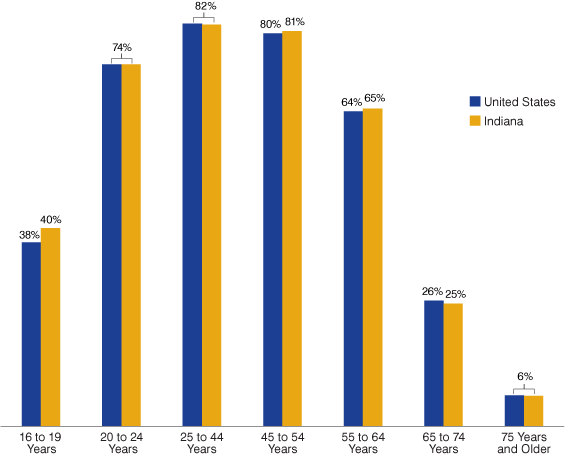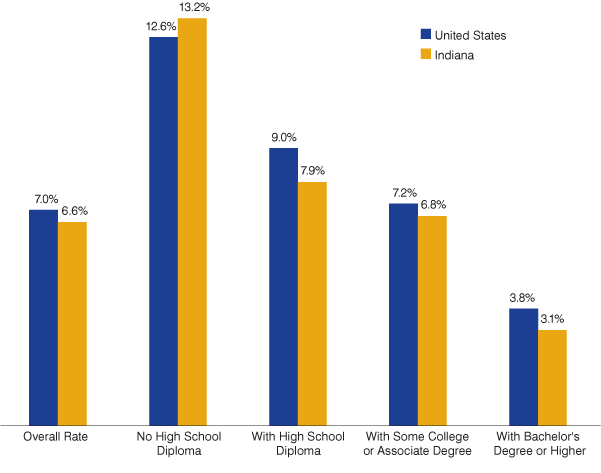Today's Labor Force
Prime working-age folks (those between the ages of 25 and 54) are participating in the labor force in the largest proportions—80 percent or higher. This is good, very good. Why? Because they are the heart of the workforce and Figure 1 shows the importance of those “prime working age” people compared to those who are very young or very old. We used the latest data from the American Community Survey, which provides us with a “rolling snapshot” (each month, households are surveyed yielding a 12-month sample).
Figure 1: In the Labor Force by Age

Source: U.S. Census Bureau, 2013 American Community Survey
That rolling snapshot can also tell us who experienced the highest unemployment rates in 2013 based on education levels. It's no surprise that Figure 2 shows folks without a high school diploma (or equivalent) faring much worse in finding employment. We monitor these data not to find surprises (although that does happen in the data world), but to determine patterns and measure the scale and scope of particular populations—such as the unemployed. Much like business, government needs to determine how many “customers” it has, or will have, for its services. Based on Figure 2, we can imply that interventions and services are needed to assist those without a high school education.
Figure 2: Unemployment Rates by Educational Attainment for Ages 25 to 64

Source: U.S. Census Bureau, 2013 American Community Survey
